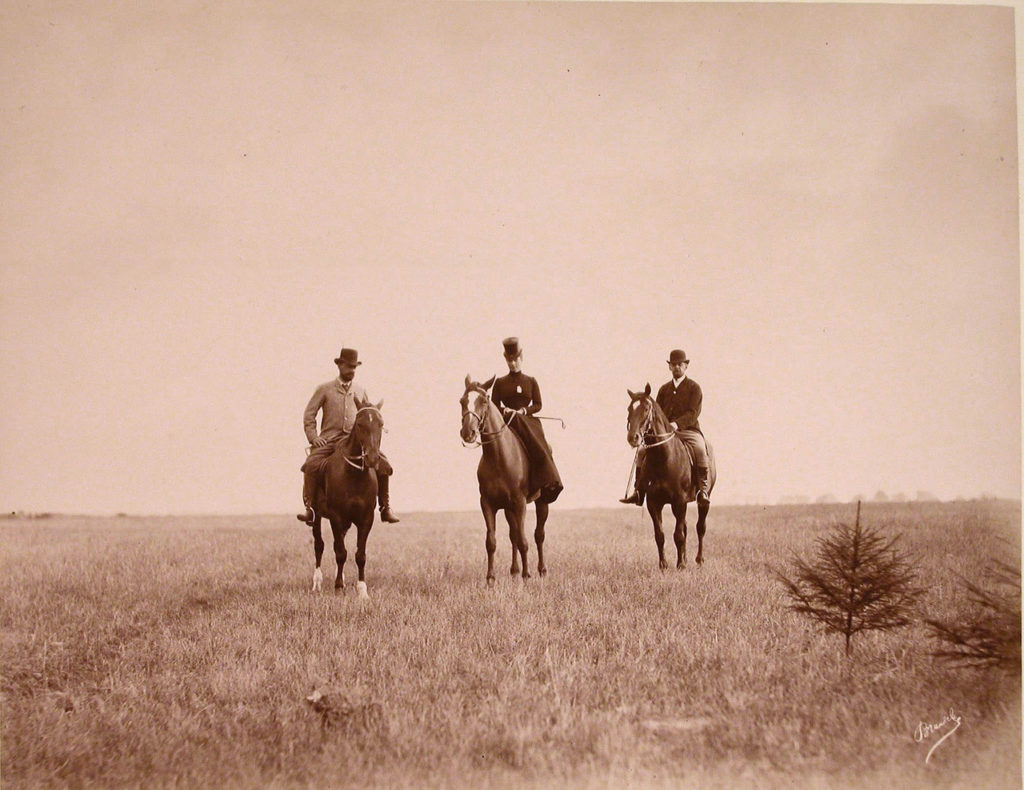
Related

Empress Maria Feodorovna while riding a horse.

Empress Maria Feodorovna while riding a horse.

Members of the imperial family in Spala. 1890

Empress Maria Feodorovna and members of Romanov family.

Her Imperial Majesty Empress Empress Maria Feodorovna (wife of Emperor Alexander III).

Horse procession. Coronation of Emperor Nicholas II and Empress Alexandra Feodorovna, 1896

Princess Dagmar future Empress Maria Feodorovna (wife of Emperor Alexander III).1865 year.

Emperor Alexander III, Empress Maria Feodorovna and participants of the Spala royal hunting

A group of officials, Members of the imperial family in Spala. 1890.
Empress Maria Feodorovna while riding a horse. Members of the imperial family in Spala. 1890
Summary
Empress Maria Feodorovna while riding a horse. Members of the imperial family in Spala. 1890
Императрица Мария Федоровна во время прогулки верхом на лошади. Пребывание членов императорской фамилии в Спале. 1890
Princess Marie Sophie Frederikke Dagmar was born at the Yellow Palace in Copenhagen. Her father was Prince Christian of Schleswig-Holstein-Sonderburg-Glücksburg, a member of a relatively impoverished princely cadet line. Her mother was Princess Louise of Hesse-Kassel. She was baptised as a Lutheran and named after her kinswoman Marie Sophie of Hesse-Kassel, Queen Dowager of Denmark as well as the medieval Danish queen, Dagmar of Bohemia. Growing up, she was known by the name Dagmar. Most of her life, she was known as Maria Feodorovna, the name which she took when she converted to Orthodoxy immediately before her 1866 marriage to the future Emperor Alexander III. She was known within her family as "Minnie". Due to the brilliant marital alliances of her father, he became known as the "Father-in-law of Europe." Her elder, and favorite, sister, Alexandra married Albert Edward, the Prince of Wales (the future King Edward VII) in March 1863. Alexandra, along with being queen consort of King Edward VII, was also mother of George V of the United Kingdom, which helps to explain the striking resemblance between their sons Nicholas II and George V. Her younger sister was Thyra, Duchess of Cumberland.
Alexander III was the second son of Alexander II and of Maria Aleksandrovna (Marie of Hesse-Darmstadt). During the first 20 years of his life, Alexander had no prospect of succeeding to the throne. His training and acquaintance was with French, English, and German, and military drill. When he became heir apparent on the death of his elder brother Nikolay in 1865, he began to study the principles of law and administration under the jurist and conservative philosopher K.P. Pobedonostsev. The tsesarevich Nikolay, on his deathbed, had expressed a wish that his fiancée, Princess Dagmar of Denmark, known as Maria Fyodorovna, should marry his successor. The marriage proved a happiest one. On March 13 (March 1, O.S.), 1881, Alexander II was assassinated, and the following day autocratic power passed to his son. Alexander III political ideal was a nation with one language, one religion, and one form of administration, he sought to strengthen and centralize the imperial administration.
Belovezhskaya Pushcha became the property of the royal family in 1888 in exchange for lands in the Orel and Simbirsk provinces. After the construction of the Belovezhsky Imperial Palace was completed, Alexander III, Nicholas II, Grand Dukes often hunted in the Pushcha. In the town of Bialowieza (now Poland) a palace was built - a luxurious hunting residence with a beautiful park of 50 hectares. Only the entrance gates and several surrounding structures survived. There are numerous photographs of Nicholas II during the hunt in these places. Grand Duchess Tatiana Nikolaevna reported with great enthusiasm on September 21, 1912 from Spala to her aunt - Grand Duchess Xenia Alexandrovna. "My dear Aunt Xenia ...": "It was terribly fun in Bialowieza. We went with Papa to hunt Olga and I. Marie was with Anastasia only twice." I stood two times with Papa on the number, since Prince Golitsyn, Prince Beloselsky and once at Drentina. "It was terribly good."
- Alexander III - Александр Третий
- Mariya Feodorovna - Мария Феодоровна
- Mariya Feodorovna - Мария Феодоровна
- Alexander III - Александр Третий | Romanov Empire
- 49 Спала Images: PICRYL - Public Domain Media Search Engine ...
- 50 Spala Images: PICRYL - Public Domain Media Search Engine ...
- 49 Спала Image: PICRYL - Collections - GetArchive
- 49 Спала Images: PICRYL - Public Domain Media Search Engine ...
- Maria feodorovna - Romanov Empire - Империя Романовых
- 49 Спала Images - Romanov Empire - Империя Романовых
